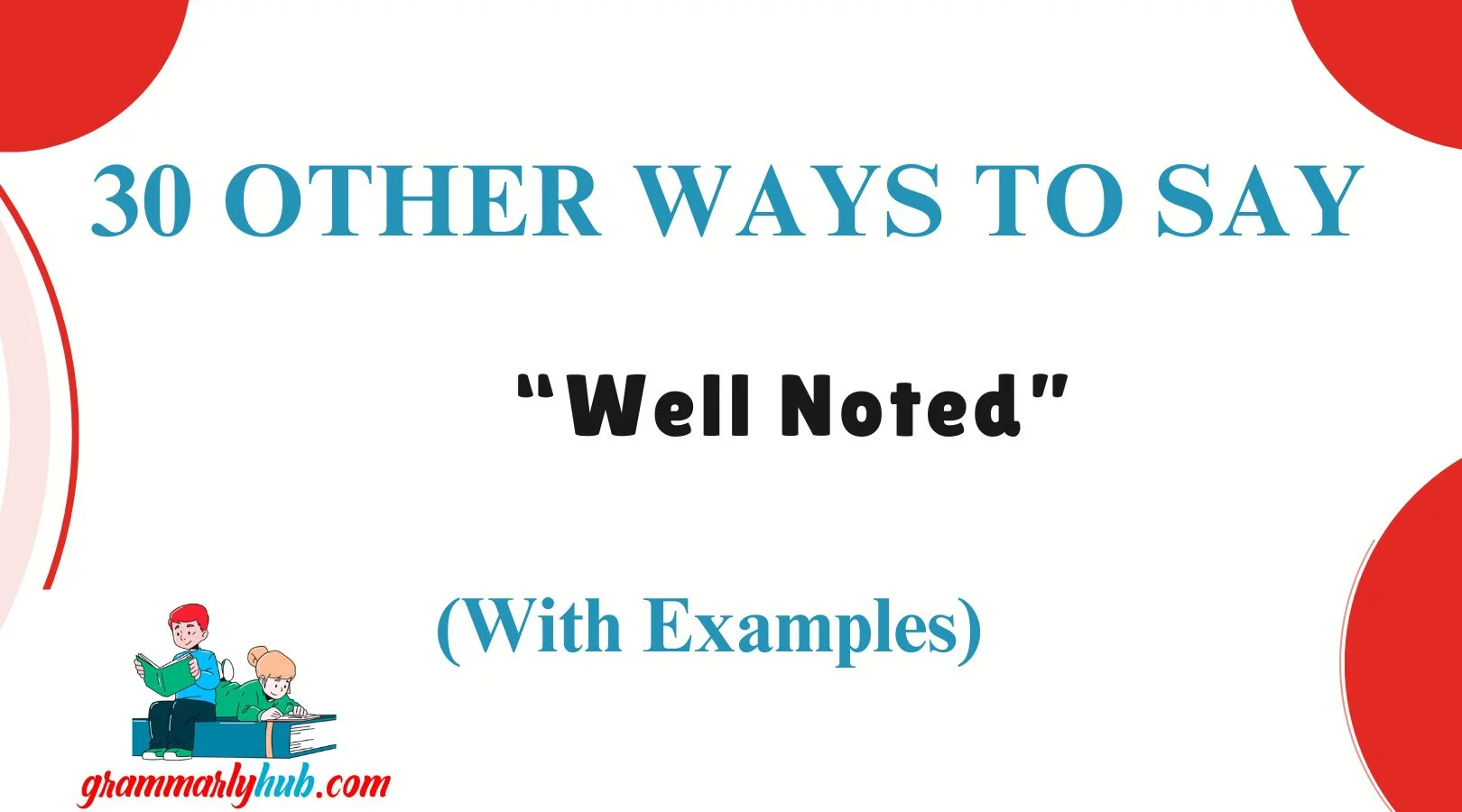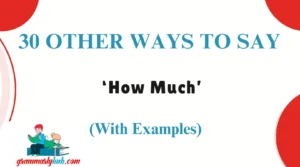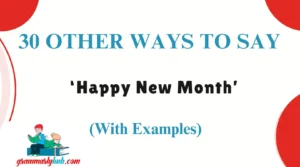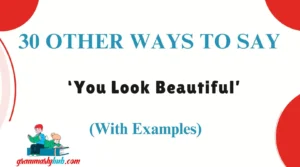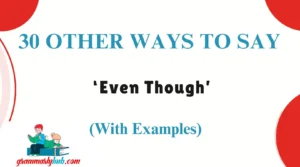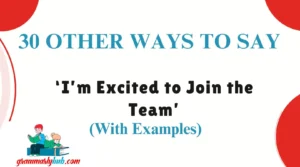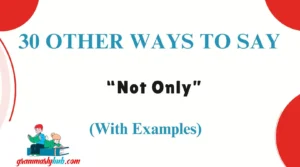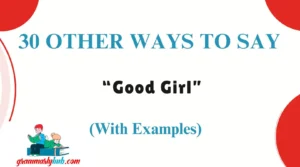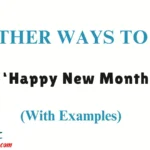When writing emails—especially in professional settings—how you acknowledge a message can shape the tone of your response. While “Well noted” is brief and widely used, it can sometimes come off as cold or overly formal. Finding warmer, more natural alternatives helps you sound more engaged, approachable, and respectful—whether you’re replying to a colleague, supervisor, or client.
Below are 30 thoughtful, polite, and context-appropriate alternatives to help you communicate clearly and kindly, with examples and usage tips for each.
What Does “Well Noted” Mean?
“Well noted” is a concise acknowledgment that shows you’ve read, understood, and mentally recorded the information shared in a message. It’s often used in emails to confirm receipt or understanding, especially in business or formal communication.
When to Use “Well Noted”
You typically use “Well noted” when:
- Confirming you’ve read instructions
- Acknowledging changes or updates
- Accepting decisions or requests
It’s most common in professional or formal emails, especially in corporate, legal, or administrative environments.
Is It Professional/Polite to Say “Well Noted”?
Yes, but with caution. “Well noted” is professional, but can feel terse or impersonal. For better tone and warmth, it’s often best to use friendlier or more conversational alternatives, especially in Western business culture.
Pros and Cons of Saying “Well Noted”
Pros:
- Short and efficient
- Clear acknowledgment
- Common in formal communication
Cons:
- Can seem cold or robotic
- Lacks warmth or personality
- May feel dismissive if used alone
“Well Noted” Synonyms
- Received with thanks
- Thanks for the update
- Got it
- Noted, and I appreciate it
- Understood
- Thanks for the heads-up
- Message received
- Acknowledged
- Noted on my end
- Got your message
- Point taken
- I’ve made a note of it
- All clear
- I’ll keep that in mind
- This is on my radar now
- Logged and acknowledged
- I’m on it
- Thanks, I’ll take care of it
- Appreciate the information
- I’ve updated my notes accordingly
- Thanks—action taken
- Thanks for flagging this
- Confirmed
- I’ve added this to my calendar
- I’ll make the necessary adjustments
- Heard and understood
- Registered, thank you
- This has been added to our system
- I’ll take it from here
- Information received and appreciated
1. Noted with thanks
Definition: Acknowledges receipt with added gratitude.
Explanation: Adds a polite and appreciative tone to your acknowledgment.
Example: “Noted with thanks. I’ll proceed accordingly.”
Worst Use: Avoid in overly casual settings—it may sound too formal.
Tone: Warm, respectful, slightly formal
2. Understood
Definition: Indicates clear comprehension of the message.
Explanation: Confirms you’ve processed the message mentally and emotionally.
Example: “Understood. I’ll adjust the report by tomorrow.”
Worst Use: Too blunt in highly formal communication without context.
Tone: Clear, concise, neutral
3. Got it
Definition: A casual and direct acknowledgment.
Explanation: Suitable for informal or quick internal communication.
Example: “Got it, thanks for the update.”
Worst Use: In formal emails or when replying to senior leaders.
Tone: Friendly, informal, quick
4. Acknowledged
Definition: Confirms receipt or recognition of a message.
Explanation: Common in technical, military, or structured business contexts.
Example: “Acknowledged. I’ll await further instructions.”
Worst Use: Can sound cold or robotic if overused in softer exchanges.
Tone: Formal, neutral, professional
5. I’ve taken note
Definition: Communicates active mental noting of information.
Explanation: Polite and reflective without being too stiff.
Example: “I’ve taken note of the meeting change. Thank you.”
Worst Use: Sounds awkward in highly casual messages.
Tone: Polite, mildly formal, thoughtful
6. Thanks for the update
Definition: Acknowledges new information while expressing appreciation.
Explanation: Useful when someone shares progress, changes, or instructions.
Example: “Thanks for the update. I’ll reflect the changes in our timeline.”
Worst Use: Not suitable if no actual update was shared.
Tone: Warm, conversational, polite
7. Noted on my end
Definition: Confirms that you’ve personally received and recorded the information.
Explanation: Adds a sense of responsibility and awareness.
Example: “Noted on my end. Let me know if anything changes.”
Worst Use: Can be redundant if it’s already clear you’re the recipient.
Tone: Casual, cooperative, informal-professional
8. Copy that
Definition: Informal acknowledgment of instructions or updates.
Explanation: Often used in fast-paced or team-based environments.
Example: “Copy that. Will follow up with marketing.”
Worst Use: In legal, executive, or formal external emails.
Tone: Informal, snappy, team-oriented
9. Thanks, I’ve noted it
Definition: Expresses gratitude while clearly confirming acknowledgment.
Explanation: Balances warmth with precision—great in most professional settings.
Example: “Thanks, I’ve noted it and will be sure to update the team.”
Worst Use: Avoid in time-sensitive emails requiring immediate action only.
Tone: Professional, warm, polished
10. I’ll keep that in mind
Definition: Suggests thoughtfulness and future awareness.
Explanation: Great when acknowledging suggestions, tips, or feedback.
Example: “I’ll keep that in mind when preparing the proposal.”
Worst Use: Not ideal for confirming receipt of factual or mandatory instructions.
Tone: Respectful, thoughtful, informal-formal blend
11. Message received
Definition: Confirms you’ve read and received the communication.
Explanation: Especially useful in internal emails or task updates.
Example: “Message received. I’ll proceed as discussed.”
Worst Use: Might sound robotic if overused without personalization.
Tone: Neutral, efficient, straightforward
12. I’ve got this noted
Definition: Assures the sender that you’ve documented the information.
Explanation: Friendly phrasing that shows reliability.
Example: “I’ve got this noted. Thanks for flagging it.”
Worst Use: Avoid in very formal business contexts.
Tone: Warm, casual-professional
13. Received with thanks
Definition: A professional way to acknowledge and appreciate the message.
Explanation: Great for formal replies with gratitude.
Example: “Received with thanks. I’ll move forward accordingly.”
Worst Use: May feel overly formal in casual team conversations.
Tone: Formal, respectful, polite
14. Appreciate the heads-up
Definition: A casual thank-you for useful or timely information.
Explanation: Works best when someone shares something proactively.
Example: “Appreciate the heads-up! I’ll prepare accordingly.”
Worst Use: In formal business letters or legal correspondence.
Tone: Friendly, laid-back, grateful
15. Will take this into account
Definition: Shows thoughtful consideration of the message.
Explanation: Good for acknowledging feedback or factors to consider.
Example: “Thanks for sharing. I will take this into account when finalizing.”
Worst Use: Not ideal for simple confirmations.
Tone: Considerate, respectful, reflective
16. Got your email
Definition: Quick confirmation that you received their message.
Explanation: Informal but reassuring, especially when a reply is pending.
Example: “Got your email—will review and get back to you soon.”
Worst Use: Too casual for high-level or client communications.
Tone: Casual, responsive, direct
17. I’ll take care of it
Definition: Shows you’ve acknowledged and will act on the request.
Explanation: Confident tone of responsibility and readiness.
Example: “I’ll take care of it and confirm once complete.”
Worst Use: Not suitable when no action is needed.
Tone: Reassuring, confident, proactive
18. All set on my side
Definition: Confirms your part is complete or ready.
Explanation: Useful for project updates and cross-functional work.
Example: “All set on my side. Let me know if anything else is needed.”
Worst Use: Can be confusing if the sender expects further acknowledgment.
Tone: Collaborative, informal-professional
19. I’ve made a note of it
Definition: Reassures the sender that you’ve recorded the info.
Explanation: Polite and commonly used when planning or prepping.
Example: “Thanks! I’ve made a note of it for tomorrow’s meeting.”
Worst Use: Doesn’t imply immediate action—use carefully for urgent matters.
Tone: Thoughtful, considerate, polite
20. Logged it
Definition: Implies information has been recorded officially or mentally.
Explanation: Common in tech, operations, or structured team workflows.
Example: “Logged it in the system. We’re good to go.”
Worst Use: Too technical for non-process-based conversations.
Tone: Techy, efficient, neutral
21. This is on my radar
Definition: Indicates you’re aware and monitoring the item.
Explanation: Friendly and proactive phrasing for planning tasks.
Example: “This is on my radar. Will follow up as soon as possible.”
Worst Use: May seem non-committal if urgency is required.
Tone: Attentive, laid-back, proactive
22. I’ll handle it
Definition: Confirms receipt and shows initiative.
Explanation: Communicates leadership and action-readiness.
Example: “Noted—I’ll handle it by EOD.”
Worst Use: Avoid if you’re unsure of responsibility.
Tone: Confident, assertive, clear
23. I’ll circle back if needed
Definition: Confirms acknowledgment while leaving room for follow-up.
Explanation: Great when no immediate reply is needed but the topic is ongoing.
Example: “Noted. I’ll circle back if needed after reviewing the data.”
Worst Use: Not ideal if an immediate decision is required.
Tone: Professional, flexible, thoughtful
24. Taken into consideration
Definition: Indicates that input or direction has been evaluated.
Explanation: Good for feedback or advice-related responses.
Example: “Your points are taken into consideration. Thanks again!”
Worst Use: May sound distant if not followed up with specifics.
Tone: Formal, courteous, neutral
25. I’ll mark it down
Definition: A friendly and action-oriented acknowledgment.
Explanation: Implies recording or scheduling something on your end.
Example: “I’ll mark it down and check in before Friday.”
Worst Use: Avoid formal corporate reports or legal communication.
Tone: Informal, proactive, casual
26. Thanks for flagging
Definition: Appreciates someone for bringing something to your attention.
Explanation: Great for reminders, risks, or quick corrections.
Example: “Thanks for flagging this. I’ve corrected the timeline.”
Worst Use: Doesn’t fit well when no error or issue was raised.
Tone: Grateful, responsive, informal-professional
27. I hear you
Definition: Acknowledges understanding in a personal, validating way.
Explanation: Best used when someone shares a concern or frustration.
Example: “I hear you. I’ll bring this up with the team.”
Worst Use: Too emotional or vague for formal task-related updates.
Tone: Empathetic, human, personal
28. We’re aligned
Definition: Confirms shared understanding or agreement.
Explanation: Excellent for wrapping up strategic or planning discussions.
Example: “We’re aligned. Let’s move forward.”
Worst Use: Avoid if there are unresolved details.
Tone: Collaborative, strategic, confident
29. All noted
Definition: Brief but polite acknowledgment of multiple points.
Explanation: Good for summarizing acceptance of a detailed email.
Example: “All noted. Will implement these changes by next week.”
Worst Use: Might sound dry if not followed with warmth or action.
Tone: Neutral, concise, slightly formal
30. Consider it done
Definition: Enthusiastically confirms receipt and action.
Explanation: Works great when you’re confident and want to reassure.
Example: “Consider it done! I’ll confirm once submitted.”
Worst Use: Avoid if you’re unsure whether it can be completed.
Tone: Positive, bold, action-ready
FAQs
1. Is “Well Noted” a professional response?
Yes, but it can sometimes feel too brief or impersonal. In formal or client-facing emails, using alternatives like “Received with thanks” or “Thanks for the update” often feels more thoughtful and polished.
2. Can I use “Well Noted” in informal settings?
You can, but it might sound too stiff. In casual emails, it’s better to go with something warmer like “Got it”, “Noted on my end”, or “Thanks for the heads-up.”
3. What’s the best alternative to “Well Noted” for client communication?
Try using “Received with thanks”, “Thanks, I’ve noted it”, or “I appreciate the update.” These show gratitude and professionalism, which clients appreciate.
4. How do I politely acknowledge receipt of information without saying “Well Noted”?
Use phrases like “Message received,” “Thanks for letting me know,” or “I’ve made a note of it.” These express the same intent in a more conversational or polished tone.
5. Is it okay to reply with just “Noted”?
While technically acceptable, just saying “Noted” can come off as curt or disinterested—especially in sensitive or important communications. It’s better to pair it with a thank you or an action plan, like “Noted—I’ll follow up tomorrow.”
Conclusion
Choosing the right words to acknowledge a message may seem like a small thing—but in professional communication, it makes all the difference. While “Well noted” is clear and acceptable, it can sometimes feel overly formal, blunt, or outdated.
By exploring these 30 alternative phrases, you now have a toolkit to respond in ways that are more personal, warm, and aligned with your tone and relationship to the recipient.
Whether you’re confirming an email, showing appreciation, or acknowledging a task, the phrases you choose say just as much about your professionalism as your actual work. So go beyond the basics. Be intentional. Be clear. Be human.
The right response can build trust, strengthen relationships, and keep communication flowing smoothly—and that’s something worth noting.

Welcome to GrammarlyHub, your go-to destination for mastering grammar, improving your writing, and finding the best language tools available online. Founded by Emma Rose, a passionate writer and advocate for clear communication, GrammarlyHub was built to help people express themselves with confidence and accuracy.
